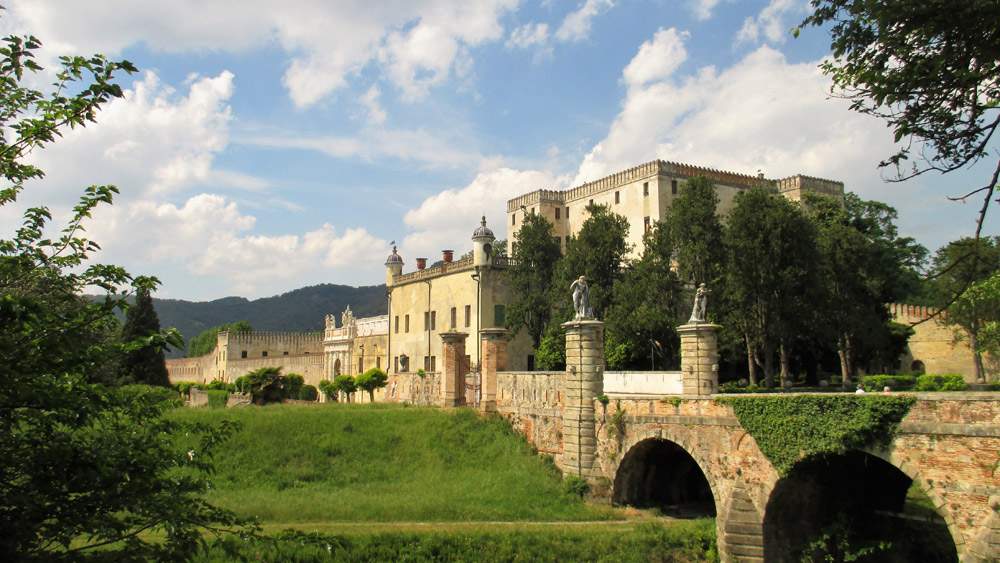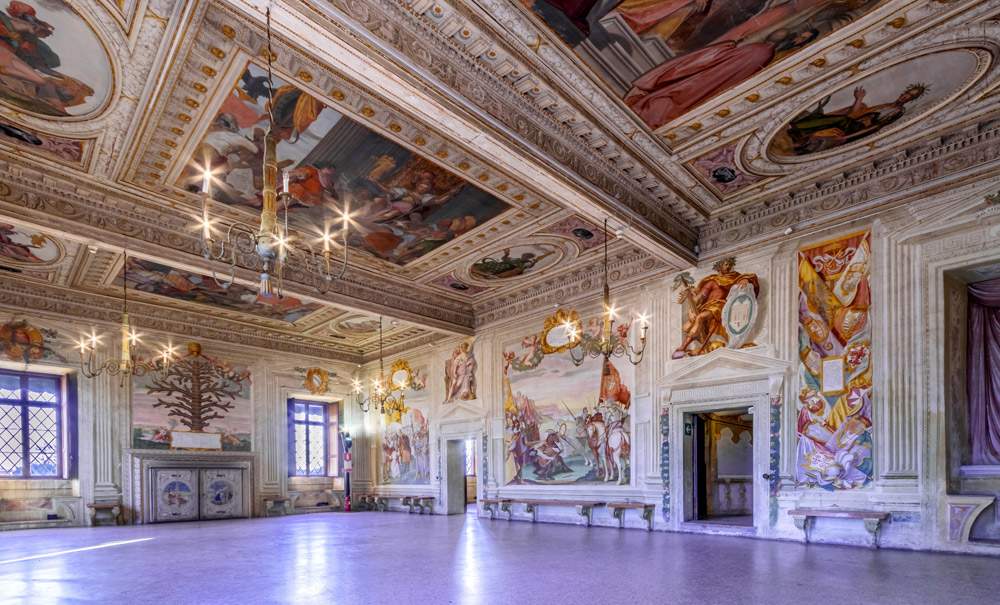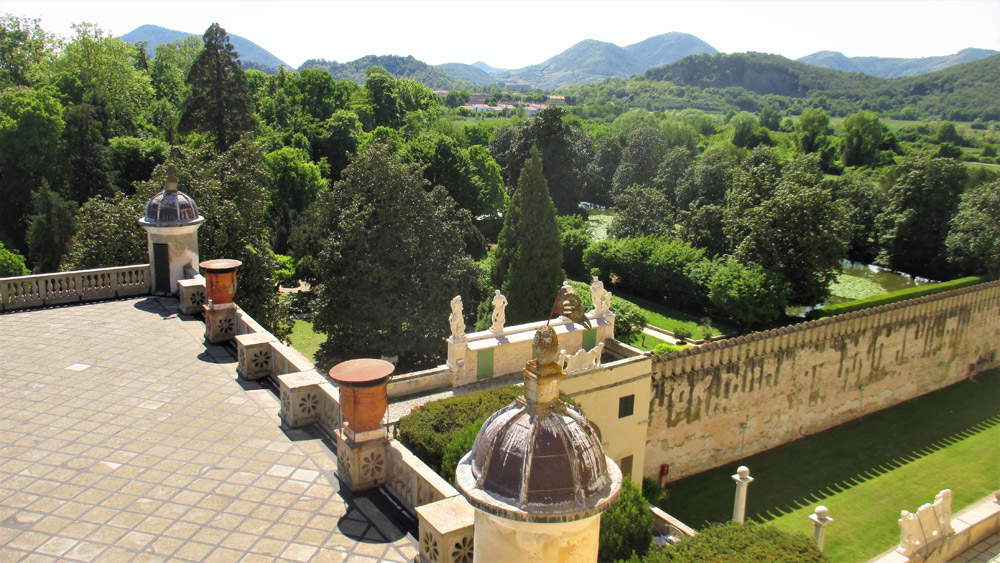They want to build a shopping center in front of the Catajo Castle
The countryside around the Euganean Hills is one of the most scenically intact areas in the entire Veneto region. Sheds, which dot the flat areas of most of the region, are a rather rare presence here. And even aggressive construction, which elsewhere has covered the plains with concrete and cement, has largely spared the pristine beauty of this land. There are ancient villages that have preserved their souls intact: Monselice, Este, Arquà . There are the placid spas immersed in lush and luxuriant vegetation, such as Abano, Montegrotto, Galzignano. It is a land where human activity has always deeply respected nature. Suffice it to say that, in order to conserve it, Law 1097, “Regulations for the protection of natural and environmental beauty and for extractive activities in the territory of the Euganean Hills,” was enacted in 1971, today referred to as the first real environmental protection law ever enacted in Italy. At the time, the enemy wasmining: the Hills abound in quarries of limestone, used for the manufacture of cement, and trachyte, a rock that is also widely used in the construction industry. Today, very few quarries remain active.
Then, to further preserve this area, the Euganean Hills Regional Park, the first, and still the largest, in the entire Veneto region, was established in 1989. To give an idea, it covers an area a third larger than that of the Po Delta Park or the Ampezzo Dolomites Park. And it is also larger than the Dolomiti Bellunesi National Park. That of the Euganean Hills is a park abounding with ancient manors, villas, castles and places of worship where great artists left their works, neat vineyards from which one of the country’s finest wines is made, olive trees, cherry trees, fruit trees (consider that 80 percent of the park’s area is cultivated), rose gardens, forests, lakes and rivers that provide shelter for a highly diverse fauna.
This environment will soon have to reckon with a monster that threatens it: the construction of a huge shopping center right in front of one of the area’s iconic monuments. We are in Battaglia Terme, a town of almost four thousand inhabitants in whose territory lies the Castello del Catajo: the hypermarket will be built in the face of this sumptuous mansion, built by the powerful Obizzi family, who made their fortune between the Middle Ages and the Renaissance thanks both to their traditional trade (the members of the dynasty were almost all captains of fortune) and to shrewd marriage policies. One of them, Pius Aeneas I, in the mid-sixteenth century decided to invest a good part of the family’s assets in the construction of a palace that could be appropriate to the status attained by the Obizzi family. Pius Aeneas I therefore commissioned the architect Andrea da Valle (Valle di Capodistria, first quarter of the 16th century Venice, 1578) to design the extension of a building that the family owned in the Euganean Hills: thus, between 1570 and 1573, the first and largest nucleus of the Catajo Castle (the so-called “Castel Vecchio”) took shape, but the extensions continued until the 19th century. Such a residence needed to be decorated by a painter fit for the purpose: Pius Aeneas I wasted no time and in 1571 gave Giovanni Battista Zelotti (Verona, 1526 - Mantua, 1576), a pupil and collaborator of Veronese, the task of frescoing the interiors. The result was one of the most important fresco cycles in the Veneto region. It is a unique building, somewhere between a fortress and a stately villa, which a scholar like Celestino Cavedoni called, in one of his 1842 pamphlets, “singular of all things and marvelous.”
 |
| The facade of the Catajo Castle |
 |
| Interior frescoed by Giovanni Battista Zelotti |
In 2016 the Castle experienced a change in ownership and a consequent change in management: the new owner, Sergio Cervellin, wanted to invest in the Castle because he considered it a heritage to be preserved and a source of opportunity for the entire Euganean territory. “Since the new owner came in,” Marco Moressa, director of the Castello del Catajo, explains, “we have started an activity aimed at valorization, including through necessary restorations, because the Castello del Catajo has always been open but has known a period of decadence: since a year ago, instead, we have witnessed a real rebirth, also because the owner has bet on the castle, which is considered both as a very valuable cultural, historical and artistic asset and as a driving force of the territory in an area that has great landscape potential. An area like there are few, moreover, in the Veneto, because it is an area that is almost intact and untouched by industrialization, as happened elsewhere.”
And all went well, until there was talk again about the actual building of the shopping center, a project that seemed never to materialize. However, in recent days, the company that owns the area designated to accommodate the hypermarket has submitted a new project to the municipality of Due Carrare (the area in fact falls under the latter municipality). It involves a structure that will affect an area of thirty-two thousand square meters: the equivalent of about five regulation soccer fields. The surface area of the building, however, will be roughly double: in the latest proposal, in fact, it was designed for a two-story high development, as opposed to the old project, which called for a single-story structure, but spread over forty-eight thousand square meters. Numbers that give a very clear idea of theimpact it will have on the area. “We find it incomprehensible,” Marco Moressa continues, “that in front of an asset like the Catajo Castle such a structure would be built. What would be said if a shopping center was built in front of Villa Pisani in Stra, or in front of the Reggia di Venaria Reale? It would be branded as an absurd, inconceivable project. Here, on the other hand, we are talking about starting work that will impact an intact area, to carry out a work that will have nefarious effects on the cultural, agricultural and tourist vocation of the area.”
Obviously, the large shopping center will also prove fatal to many economic activities in the area. The president of Confesercenti of Padua, Nicola Rossi, has estimated that the hypermarket in Due Carrare could cause serious damage to about three hundred businesses in the Euganean Hills area, in a province that already has, according to Confersercenti’s estimates, 538 square meters of large-scale retail trade for every thousand inhabitants. Not to mention the jobs: yes, the mall will bring new ones, but it is assumed that for every new job created by the center, there will be between four and five lost in local small business. “We, too,” says the director of Castello del Catajo, “can say that the opening of the mall will have a strong economic impact on Castello. A structure like the one that is to be built will lead to the death of the area, including us. And it’s not just us saying this, there are also estimates from trade associations. So much so that the owner has already let it be known that, should the mall project go through, he will consider stopping the restorations, halting all enhancement works, and even closing the Castle, because there is no point in investing in an area that will meet certain death.” A kind of economic suicide, in short, based on an old project (it has been since 1990, Rossi guarantees, that there has been talk of the Due Carrare hypermarket) and an outdated economic model because, right now, the debate is about how to enhance traditional activities and how to propose alternative development methods to those of large-scale retail, based on the standardization of supply and non-places that incentivize consumerism at the expense of conscious buying. “We are going to have a mall identical to many others around the world,” Moressa says. “And it’s offensive to the territory, which should be valued for its particularities and uniqueness.”
 |
| The landscape surrounding the Catajo Castle |
And to think that the current mayor of Due Carrare, Davide Moro, when he was in opposition had expressed opposition to the project. Now, however, its feasibility is being considered. But it seems that the inevitable negative repercussions are not being taken into account: “We believe,” Moressa continues, “that this project is an endless and incomprehensible disfigurement. It is then true that there has long been talk of building a shopping center in the area and that the project has existed for several years, but it must also be said that, compared to the time when the project was first presented, times have changed considerably, and to make a shopping center now is the result of an old mentality, which does not take into account the renewed needs of the economy, which moreover are now going in the opposite direction to the construction of large shopping centers.”
While waiting to know the fate of the project, Catajo Castle has already won people’s affection. On social media one could see an attachment to the heritage that is heartening and gives hope for the final outcome of this battle. “Fortunately,” the director lets us know, “we have received many messages of solidarity, both from citizens of the area and from art and culture lovers who follow our activities and who have shown great sensitivity, as well as great attention to this affair. Solidarity but also willingness to defend the territory and to help us: so many have told us ”if you can do something, we are with you.“ Citizens understand very well that Catajo Castle and its territory are assets to be safeguarded, as well as an opportunity that must be defended.” Meanwhile, associations in the area are already moving to oppose the opening of the mall. Patrizio Bertin, president of Ascom Padua, has let it be known that the province’s merchants’ association will do everything to block the operations. The same intentions have also been made by Confesercenti, which has made appeals to political and social forces through local newspapers. Citizens and committees in the area have called for an information meeting on July 10 in Battaglia Terme on the “new monsters” (the shopping center is in fact not the only one) threatening the Euganean Hills. And Castello del Catajo is certainly not backing down either; on the contrary, it is among the leaders of the opposing front. “We,” Mauro Moressa concludes, “will do everything in our power to prevent the territory from being devastated. We are small, but we will bring all our resources to bear and we will not shy away from doing what needs to be done for the good of the Castle and the territory.”
Warning: the translation into English of the original Italian article was created using automatic tools. We undertake to review all articles, but we do not guarantee the total absence of inaccuracies in the translation due to the program. You can find the original by clicking on the ITA button. If you find any mistake,please contact us.




























